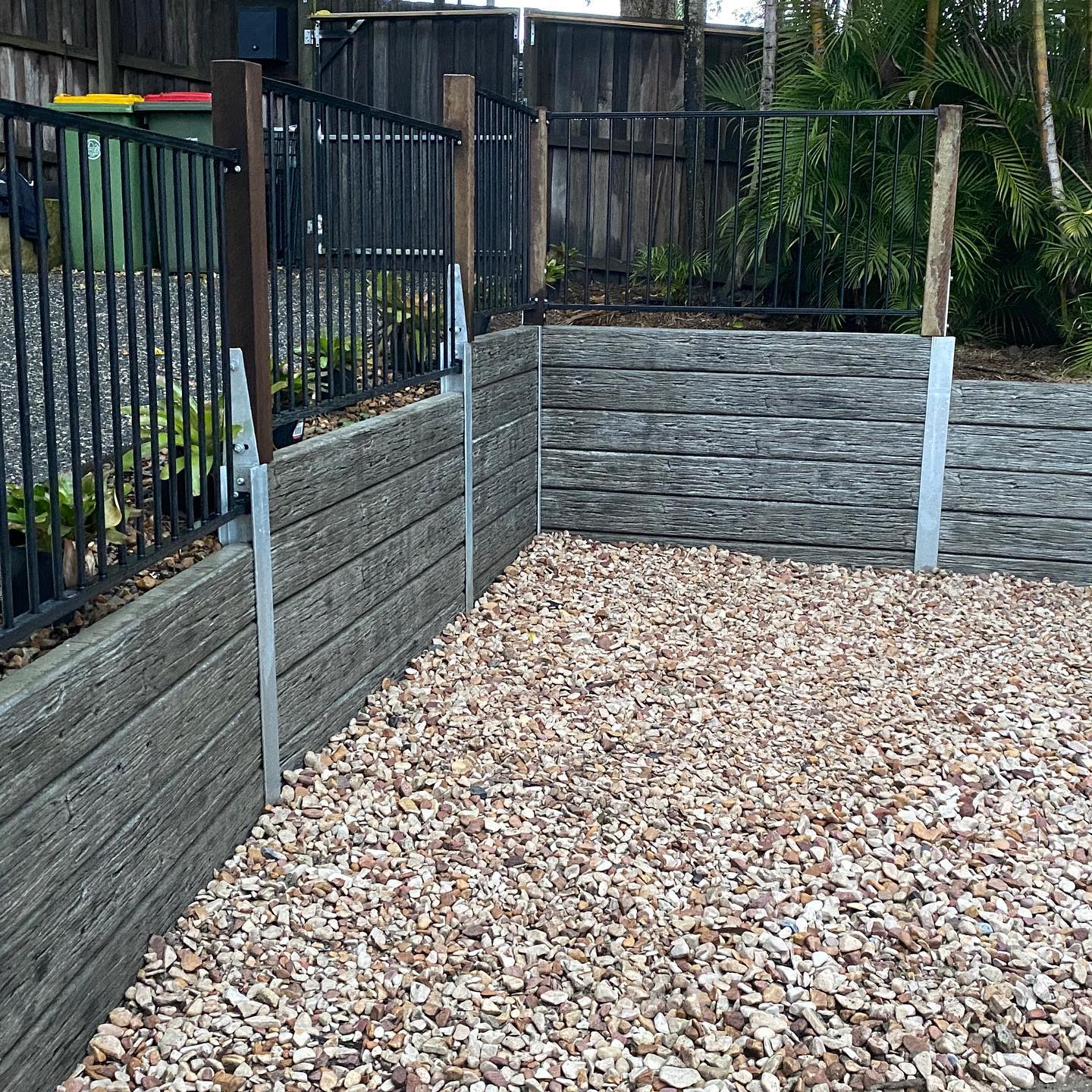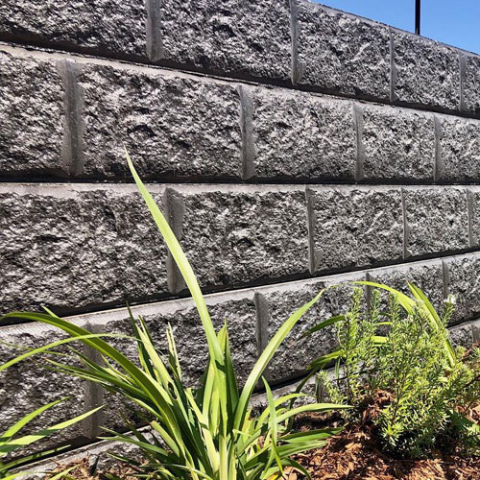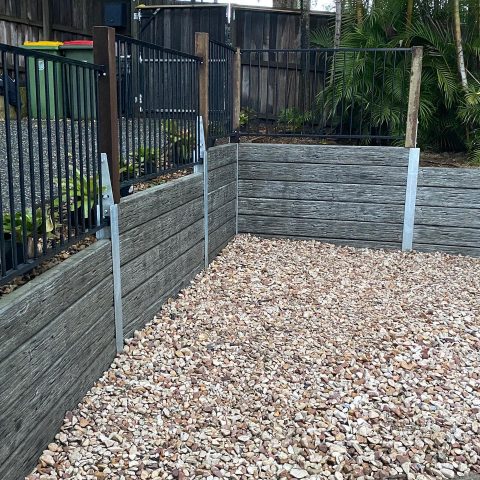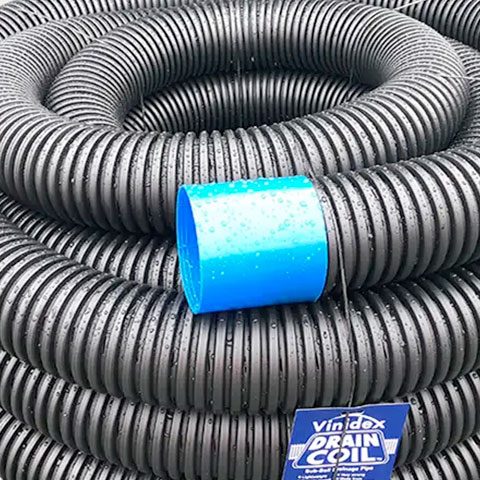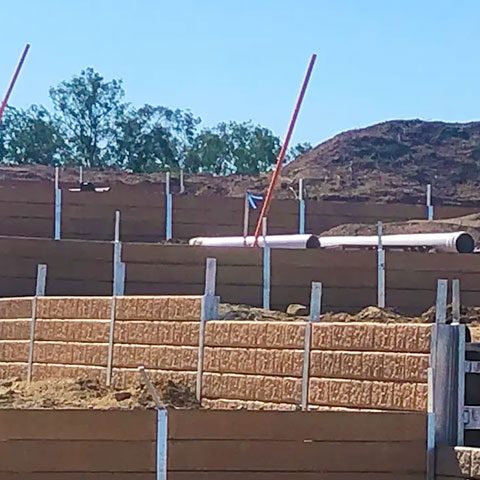DIY Concrete Sleeper Wall
1 Aug 2024
With the lead up to Christmas and the chaotic schedules of trades we see a lot more DIY within the construction industry. Retaining walls aren’t overly difficult and can be attempted by the savvy renovator, but there are some important factors that need to be taken into consideration.
Regulations and Engineering
AS4678-2002 – Earth Retaining Structures sets the overall standards for retaining walls in Australia.
Other Australian Standards that may be relevant include:
AS/NZ1170.0-2002 Structural design actions – General principles
AS/NZ1170.0-2011 Structural design actions – Wind actions
AS3600-2009 Concrete structures
AS/NZ2312-2002 Guide to the protection of structural steel against atmospheric corrosion by the use of protective coatings.
On top of these Australian Standards, councils have their own regulations, so it is best to do your research to ensure there are no hiccups along the way. Engineering is also a cost and consideration to factor in depending on your wall height. You can find out more about your council’s requirements in our educational centre.
Foundations
Foundations are quite possibly the most important part of a retaining wall considering it is expected to hold a dense amount of earth. The required foundations will vary depending on soil properties, wall height and council/engineering requirements. By ensuring the foundations are accurate and to specification it ensures avoiding issues later down the track.
Drainage
Another really important factor to consider as incorrect or inadequate drainage will eventually compromise the wall and cause the wall to fail. We recommend using agi pipe and geotextile fabric for concrete sleeper retaining walls and you can purchase these from us at QPro Concrete Sleepers in Brisbane, or from one of our resellers. You can read more on drainage in our earlier blog post.
Materials
Timber, block, brick, concrete sleepers and rock, there are plenty of options so ensure you do your research. Timber is often the cheapest option but doesn’t last as long as alternate options; bricks are strong and durable but are labour intensive; concrete sleepers on the other hand are ideal because not only are they aesthetically appealing, but they are strong, durable and require minimal maintenance.
Planning
This is probably the aspect that lets a lot of DIY renovators down. You need to ensure you have a full plan when it comes to building a retaining wall from start to finish, consider any curves, obstructions, access issues for machinery and trucks and consult with an engineer and your local council if required. Ensure your schedule allows you to have your materials delivered at least a day before concrete is organised. Ultimately, allow yourself time between the different stages that way everything should still run smoothly regardless of any hiccups that may arise.
Download your QPro Concrete Sleepers Technical Design Guide here then if you have any further questions or want to make an order, have a chat with our friendly team on (07) 3154 6325 or via email sales@qproconcretesleepers.com.au
